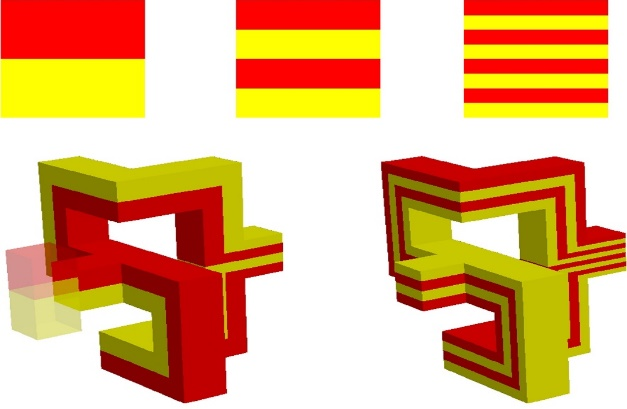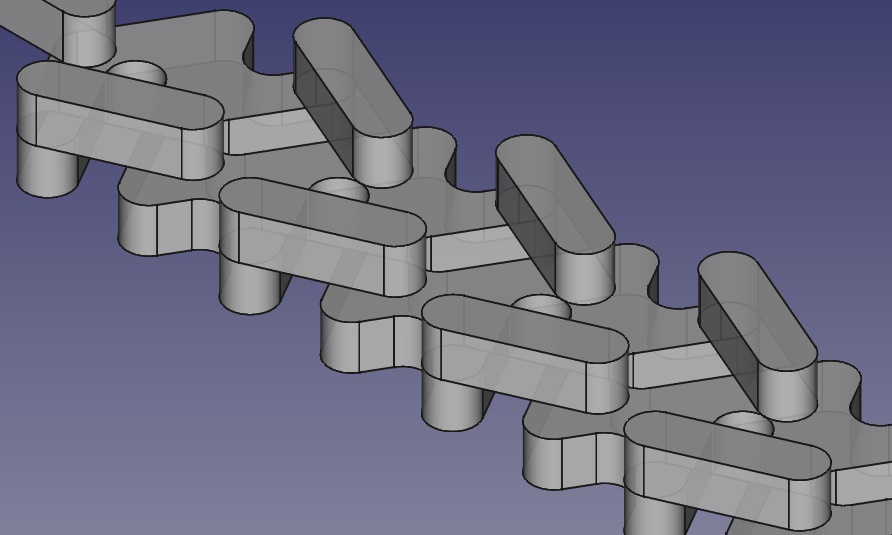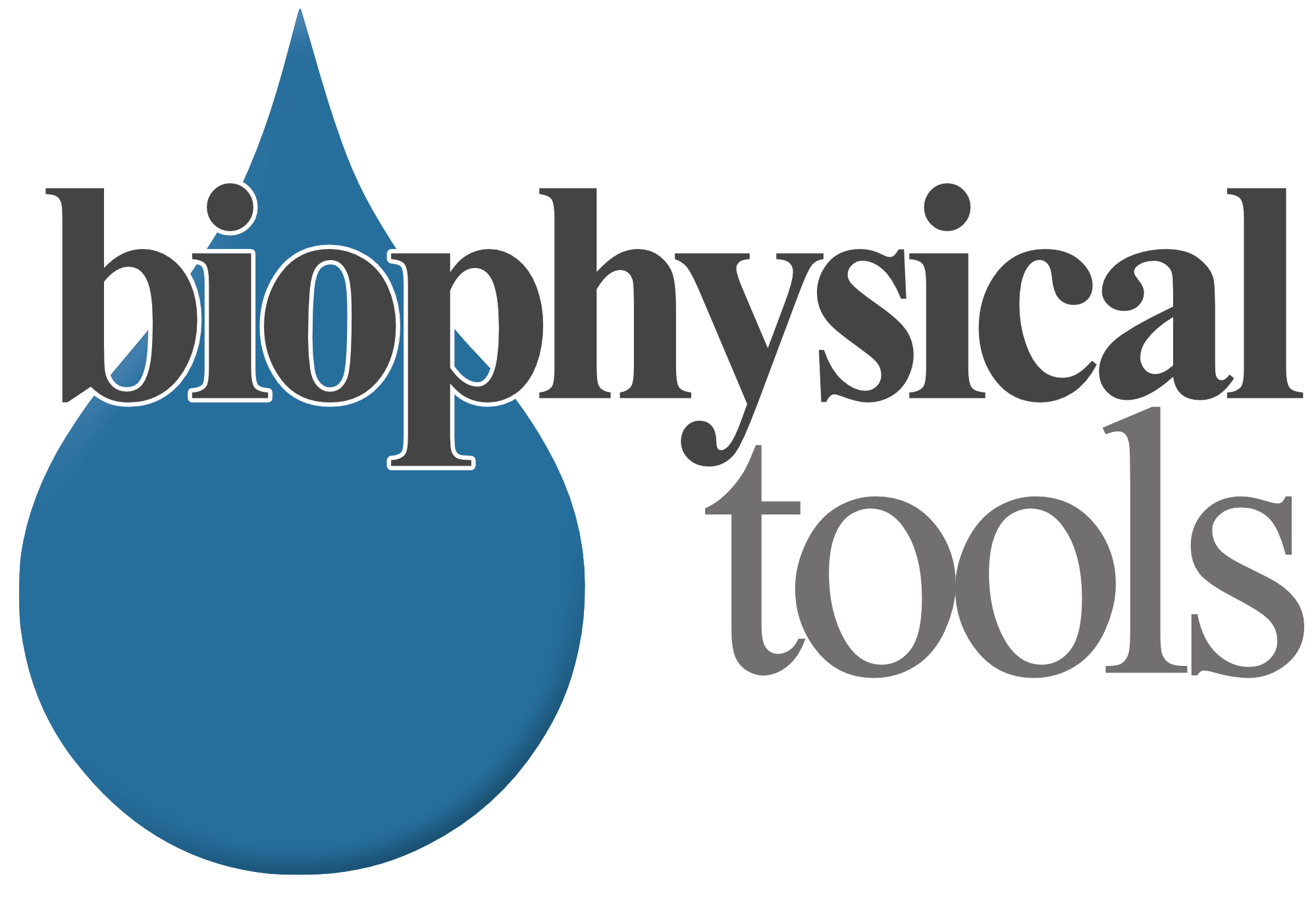Principles of Channel Design for Spatio-Temporal Mixing
Concentration Pulses in Microfluidic Mixer
Various applications require a controlled mixing of multiple fluids in microfluidic devices. However, microfluidic mixing represents a challenge due to the laminar flow regime in microchannels, which result from low Reynolds numbers determined by the channel dimensions, flow velocity, and kinetic viscosity of the solution. For example, the dominant mixing mechanism would be molecular diffusion in a simple Y-shaped junction of two mixing fluids.
Most mixing techniques focus on spatial mixing, i.e., two inlet fluids (for instance, water and ink) with constant volume flow are combined and mixed into one outlet fluid. Here, passive mixing methods of channel designs have been used, e.g., flow channel geometries with slanted wells or ridges, varying channel geometry, changing channel topologies, and channel surface modification. For example, the microfluidic mixer in figure 1 is essentially supporting diffusion between water (transparent/white) and ink (blue) by shear flows in the narrow sections and pockets in between where specimens can reside. This micromixer is spatially mixing two fluids with constant flows efficiently.
Dose-response studies and novel high-throughput technologies, especially sequencing techniques, demand for time-dependent mixing of fluids. For instance, changing dose concentration over time or pulsed dose concentration enables (epigenetic) adaptation and drug-resistance studies. When considering pulsed volume flows of mixing fluids in a micromixer, designs that rely on mixing by amplifying the diffusion process between mixing fluids display a disadvantage, see figure 2.
Here, the mixer is set up to mix two fluids, water and ink. Initially, water is flowing through the mixcromixer, first image from left. Next, an intense pulse of concentrated ink is applied to the inlet. However, the highly concentrated ink at the inlet rapidly mixes in the microchannel’s pockets. The pulse of concentrated ink will be strongly diluted when reaching the outlet. As a result, the outlet flow will show a smooth increase and decrease in ink concentration over time instead of a short and intense pulse of concentrated ink. This meandering channel design is mixing two fluids in time, i.e. inlet fluids with time-dependent concentrations can reside and mix in the cavities of the channel resulting in a time-smoothed outlet concentration.
Another typical micromixer design is the 3D topological mixer, e.g., the well-known baker’s transformation in figure 3, left image (Carrière et al., Physics of Fluids 19, 118110 (2007)). Here, two fluids are unified vertically, then split up horizontally in two channels and recombined vertically again. With multiple units in a row, this channel design mixes by layering the fluids, thus drastically increasing diffusive processes. The drawback is the non-trivial manufacturing which can increase production costs significantly. To circumvent the high costs of manufacturing of some topological mixers, optimized multi-layer mixing channels (often called “2.5D” structures) are often preferred, see figure 3 right image, as their manufacturing is often significantly less expensive. Topological micromixers are also providing excellent spatial mixing.
Further, topological mixers can be designed with minimal temporal mixing, see figure 4. A concentrated ink pulse at the inlet flows through the micromixer and will not strongly diluted till it reaches the outlet. This is mainly achieved by minimizing cavities where fluids can pool which reduces the residence time of a fluid to a minimum, and by optimizing the geometry of the split-and-recombine channels so that flow paths a fluid element can take through the micromixer are equally likely, e.g. there is no “fast lane” in the microfluidic mixers. Thus, topological micromixers provide an excellent opportunity for time-resolved microfluidic dose-response studies.
Author: Dr. H. Kubitschke
Newsletter Subscription
We regularly update this page with new technical and application notes as well as background information on Microfluidics, Hydrodynamics and more. If you want to stay updated, please subscribe.





